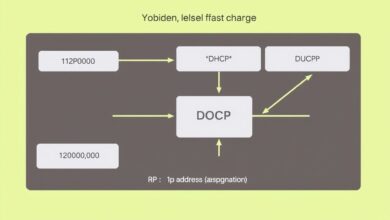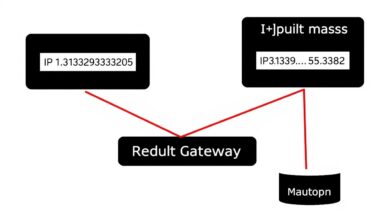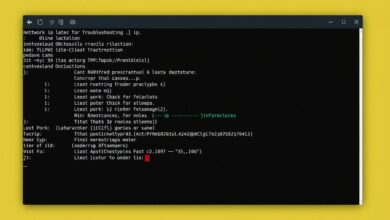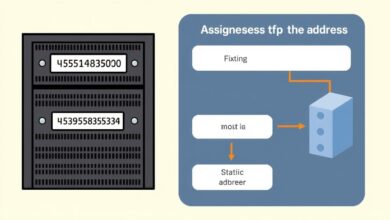Understanding Subnetting: Dividing Your Network for Beginners
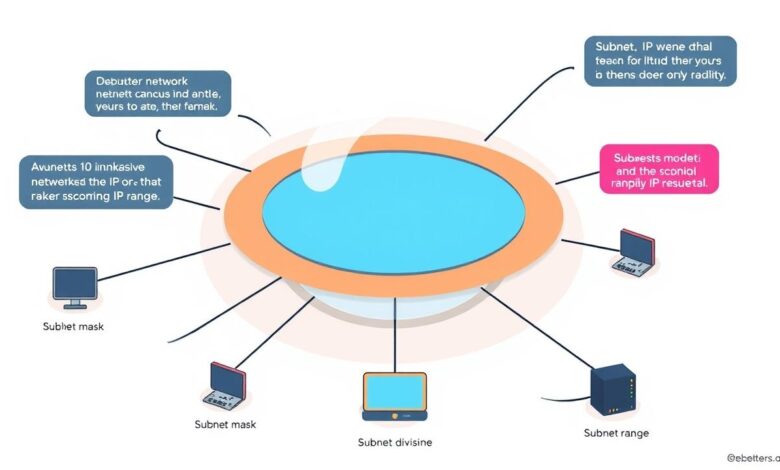
Welcome, aspiring network enthusiasts! If you’re just starting out in the world of networking, you’ve likely encountered terms like IP addresses and network masks. Right alongside them is a fundamental concept that is absolutely essential for managing any network effectively: understanding subnetting. Don’t let the technical jargon intimidate you; subnetting, at its core, is simply the practice of taking a large network and breaking it down into smaller, more manageable pieces called subnets.
Think of your entire network as a large office building. Inside this building, you have different departments, floors, or teams. While everyone is under the same roof (the main network), you wouldn’t want mail or internal communications for accounting to go directly to the marketing team without some form of sorting. Subnetting does something similar for your network traffic. It creates these smaller, logical divisions to keep traffic within specific groups of devices, improving organization, efficiency, and security.
Why is Understanding Subnetting Crucial?
So, why bother dividing up your network? Here are the key reasons why subnetting is indispensable:
- Improved Network Management: Smaller subnets are easier to manage, monitor, and troubleshoot. Instead of dealing with one massive list of devices, you can focus on smaller groups.
- Enhanced Network Performance: By creating subnets, you reduce broadcast traffic within each segment. Broadcasts are messages sent to *all* devices on a network. In a large, flat network, this can quickly overwhelm devices and slow things down. Subnetting confines these broadcasts to their respective subnets.
- Better Security: Subnetting allows you to implement security policies and access controls between different subnets. You can restrict communication between certain groups of devices, adding layers of security.
- Efficient IP Address Utilization (Especially IPv4): In the past, before techniques like NAT became widespread and with the limited supply of IPv4 addresses, subnetting was crucial for not wasting addresses. While less critical with IPv6’s vast address space, proper IP planning using subnetting is still vital for organization.
- Organization and Structure: It provides a logical structure to your network, making it easier to assign IP addresses systematically and understand the network layout.
Understanding subnetting is a core requirement for networking certifications like CompTIA Network+ and Cisco CCNA. It demonstrates a fundamental grasp of how networks are structured and managed.
The Role of the IP Address and Subnet Mask
To grasp subnetting, you first need a basic understanding of IP addresses and the subnet mask. As discussed in our article on IP Addresses, Subnets, and Gateways Explained for Server Beginners, an IP address (like 192.168.1.100) identifies a specific device on a network.
However, an IP address alone doesn’t tell you *which part* identifies the network and *which part* identifies the specific device (host) on that network. That’s where the subnet mask comes in.
[Hint: Insert image showing an IP address and subnet mask side-by-side, illustrating the network and host portions.]A subnet mask is a 32-bit number (for IPv4) that, when compared to an IP address, reveals the network address and the host address. It works by using a sequence of ones followed by a sequence of zeros. The ‘ones’ portion corresponds to the network part of the IP address, and the ‘zeros’ portion corresponds to the host part.
How the Subnet Mask Works (A Simple View)
Let’s take a common example:
IP Address: 192.168.1.100
Subnet Mask: 255.255.255.0
In binary, this is:
- IP Address: 11000000.10101000.00000001.01100100
- Subnet Mask: 11111111.11111111.11111111.00000000
Where there is a ‘1’ in the subnet mask, the corresponding bit in the IP address is part of the network address. Where there is a ‘0’ in the subnet mask, the corresponding bit in the IP address is part of the host address.
Using a logical AND operation (which is how computers do it):
- Network Address: 11000000.10101000.00000001.00000000 (which is 192.168.1.0)
- Host Address: 00000000.00000000.00000000.01100100 (which identifies host 100 on that network)
The network address (192.168.1.0 in this case) represents the entire subnet. All devices on this subnet will have the same network address portion.
Subnetting in Practice: Borrowing Bits
Subnetting involves “borrowing” bits from the host portion of the IP address (the part with zeros in the default subnet mask) and using them for the network portion. Each bit you borrow doubles the number of possible subnets, but halves the number of available host addresses within each subnet. This is a trade-off you make based on the needs of your network.
For instance, with a 255.255.255.0 mask (24 bits for the network), you have one network with 254 usable host addresses (2^8 – 2 for network and broadcast addresses). If you borrow one bit from the host portion, your mask becomes 255.255.255.128 (binary …10000000). Now you have 2 subnets (2^1), each with 126 usable host addresses (2^7 – 2). Borrowing two bits gives you 4 subnets (2^2), each with 62 usable hosts (2^6 – 2), and so on.
[Hint: Insert diagram showing how borrowing bits affects the subnet mask and creates more subnets.]CIDR Notation
You’ll often see subnet masks represented using CIDR (Classless Inter-Domain Routing) notation, like /24 or /26. This simply indicates the number of consecutive ‘1’ bits in the subnet mask. A mask of 255.255.255.0 is /24 because it has 24 ones (8 + 8 + 8 + 0). A mask of 255.255.255.128 is /25 (24 + 1). This is a more concise way to express the subnet mask.
Practical Benefits and Real-World Use
Beyond theoretical benefits, subnetting is used everywhere. Large organizations divide networks by department, floor, or building. Internet Service Providers (ISPs) use it to allocate smaller blocks of IP addresses to their customers from larger blocks they receive from regional registries (like ARIN, RIPE NCC, etc. – learn more at ARIN). Even in a small office or advanced home network, subnetting can separate different types of traffic, like keeping guest Wi-Fi separate from the main network.
Getting Started with Subnetting Calculations
While understanding the concepts is key, calculating subnets (determining valid network addresses, broadcast addresses, and host ranges for a given IP and mask) is a practical skill. It involves binary math, which can seem daunting at first. Many online subnet calculators can help you practice and verify your calculations without needing to do the binary conversion manually every time. Start with simpler masks (/24, /25, /26) and gradually work your way up.
Mastering subnetting takes practice, but the effort is well worth it. It provides a solid foundation for understanding how networks are structured and managed, which is invaluable for anyone pursuing a career in IT or networking.
By breaking down larger networks into smaller, manageable subnets, you improve performance, enhance security, and make network administration significantly easier. Keep practicing, and the world of subnetting will soon become second nature!
Do you have questions about a specific subnetting scenario? Let us know in the comments below!
